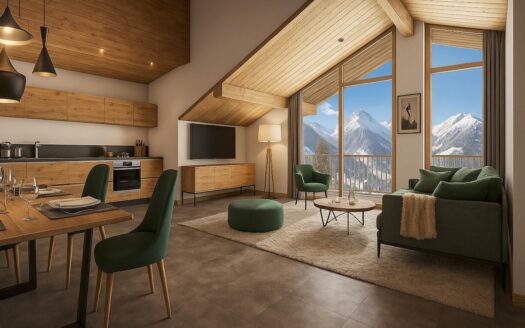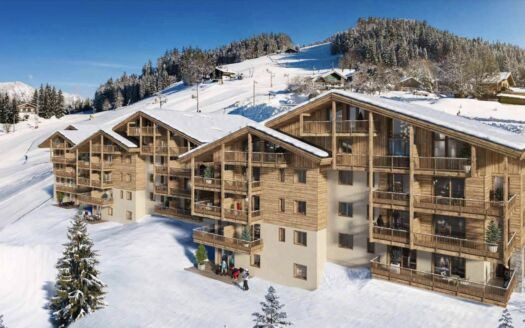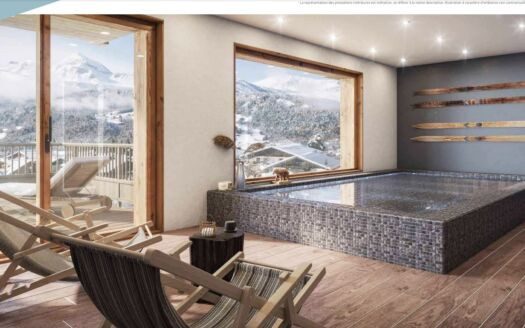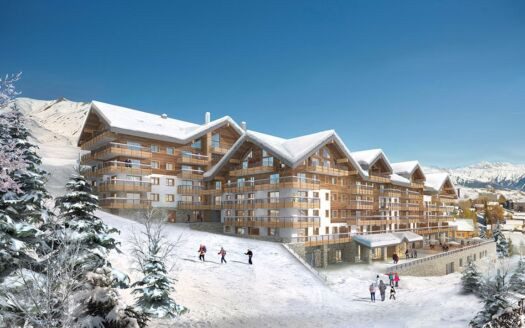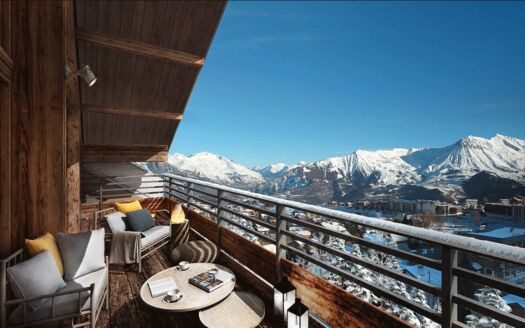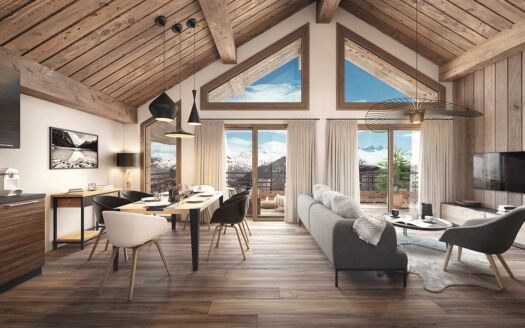Loi Montagne Guide Part 1
The Loi Montagne Myth: What 20 Years in French Ski Property Sales Taught Me
The biggest lie in French ski property sales? “The Loi Montagne requires you to rent out your property.”
I’ve heard this claim thousands of times across resort sales offices from Courchevel to Chamonix. It’s repeated so often that even experienced agents believe it. But after 20 years selling French ski properties, I can tell you definitively: The Loi Montagne contains absolutely no rental obligations.
Yet somehow, this myth has become the foundation of how the entire industry explains rental commitments to buyers.
France’s Loi Montagne: Understanding the Reality Behind French Alps Ski Resort Property Regulations
France’s Loi Montagne has become one of the most misunderstood and misrepresented pieces of legislation in European property markets. For decades, ski property developers and sales agents have conflated this mountain development law with rental obligations and VAT recovery schemes, creating widespread confusion among buyers and investors. This comprehensive analysis examines what the Loi Montagne actually does, its genuine achievements and failures, and how it intersects with France’s tourism real estate market in the French Alps.
Introduction: The Foundation of Mountain Development Policy
The Loi Montagne (Mountain Law) represents France’s foundational approach to managing development in mountainous regions. Enacted through Law No. 85-30 on January 9, 1985, this legislation was voted on unanimously and marked the first time in French legal history that a specific geographical area became the subject of dedicated comprehensive legislation. The law aimed to establish “an equilibrium between development and protection of mountain territories” while enabling mountain communities to achieve “equality of income and living conditions” with other French regions.
The legislation applies to 22.3% of French territory, covering whole or partial areas of 6,181 municipalities. Mountain municipalities are defined as having more than 80% of their territory above 600 meters altitude, or a vertical drop between the lowest and highest cultivated points of at least 400 meters. Additional criteria include limitations on land use due to climatic conditions and steep slopes that prevent mechanisation or require expensive equipment.
In 2016, the original law was significantly amended through Law No. 2016-1888 of December 28, 2016, known as the “Mountain 2” Act for “modernisation, development and protection of mountain territories”. This update added provisions for climate change adaptation, digital technology development, seasonal work regulations, and, notably, tourism real estate restoration.
Coverage in the French Alps
The Loi Montagne governs all major French Alps ski resorts due to their location within designated Alpine departments. The Northern French Alps (Savoie and Haute-Savoie) include 273 municipalities covered by the legislation, encompassing iconic destinations like:
Three Valleys (Les Trois Vallées): Val Thorens, Méribel, Courchevel, Les Menuires
Paradiski area: La Plagne, Les Arcs
Espace Killy: Tignes, Val d’Isère
Chamonix Valley: Chamonix, Les Houches, Argentière
Portes du Soleil: Avoriaz, Morzine, Châtel
The Southern French Alps similarly fall under Loi Montagne jurisdiction, including resorts like Serre Chevalier, Les Deux Alpes, Alpe d’Huez, and Isola 2000. This universal coverage means that virtually 100% of significant French Alps ski resorts operate under the same regulatory framework, creating consistent development standards across the region.
Timeline of Loi Montagne Development
1985: Law No. 85-30 enacted on January 9, establishing the foundational Mountain Law framework with unanimous parliamentary approval
1985-2016: The original law remained in effect with various implementing decrees, including:
Decree No. 85-994 (September 20, 1985): Establishing the National Mountain Council
Decree No. 2004-69 (January 16, 2004): Defining boundaries of France’s five mountain massifs
2016: Law No. 2016-1888 enacted on December 28, known as the “Mountain 2” Act, adding sustainable development objectives and tourism real estate restoration provisions
2020: Amendment adding climate change mitigation and adaptation as key objectives
Current Status: As of 2025, the legislation governs 6,158 municipalities covering 22.3% of French territory
The Pros: Legitimate Achievements of the Loi Montagne
Environmental Protection and Controlled Development
The Loi Montagne has successfully achieved its primary objective of controlling mountain development while protecting environmental integrity across all French Alps resorts. The law’s requirement that “all construction must be in continuity with existing villages and hamlets” has prevented the anarchic sprawl that plagued some Alpine regions during the 1960s-1970s construction boom. This provision has preserved the visual character of the French Alps landscapes and prevented scattered development across pristine slopes.
From Courchevel’s carefully controlled luxury developments to La Plagne’s integrated resort planning, the legislation established strict zoning controls that limit where and how construction can occur. These restrictions have been instrumental in maintaining the French Alps as both viable economic areas and protected natural environments, distinguishing French resorts from some less regulated Alpine destinations in neighbouring countries.
Municipal Economic Benefits
The Loi Montagne framework has been exceptionally successful in generating sustainable revenue streams for French Alps municipalities. The system creates multiple revenue channels, including:
Taxe Loi Montagne (TLM) levied on ski-lift operators across all French Alps resorts
Enhanced property tax bases from controlled high-value developments
Tourism-related municipal taxes from occupied properties
Commercial licensing revenues from management companies
This economic structure has enabled small mountain communities throughout the French Alps – from Tignes with its 2,100 permanent residents to Val Thorens with just 350 year-round inhabitants – to maintain essential services and infrastructure that would otherwise be financially unsustainable given their limited permanent populations.
Resort Economic Viability Through “Warm Beds”
While often misunderstood in its implementation, the law’s underlying philosophy of encouraging property occupation has contributed to the economic health of French Alps ski resorts. By creating frameworks that encourage rental when properties aren’t in personal use, the legislation has helped maintain resort viability throughout extended seasons. French tourism residences represent 26% of the country’s professional tourism accommodation, with 68% occupancy rates in mountain locations during winter.
This principle has been particularly successful in larger French Alps resort systems. The Three Valleys, for instance, maintains consistent economic activity across its connected resorts of Courchevel, Méribel, and Val Thorens through high property occupation rates, supporting local employment in hospitality, maintenance, and mountain services year-round.
International Investment Attraction
The structured approach to mountain development, combined with associated tax incentives, has made French Alps ski resorts among the world’s most attractive property investment markets. The clear regulatory framework provides international investors with certainty about development standards and ongoing obligations, contributing to strong property values across the region.
British, Scandinavian, and other EU investors have particularly embraced the French Alps market, with destinations like Chamonix, Courchevel, and Val d’Isère seeing significant international property ownership. The 20% VAT recovery schemes available on new properties have further enhanced the region’s appeal to foreign buyers.
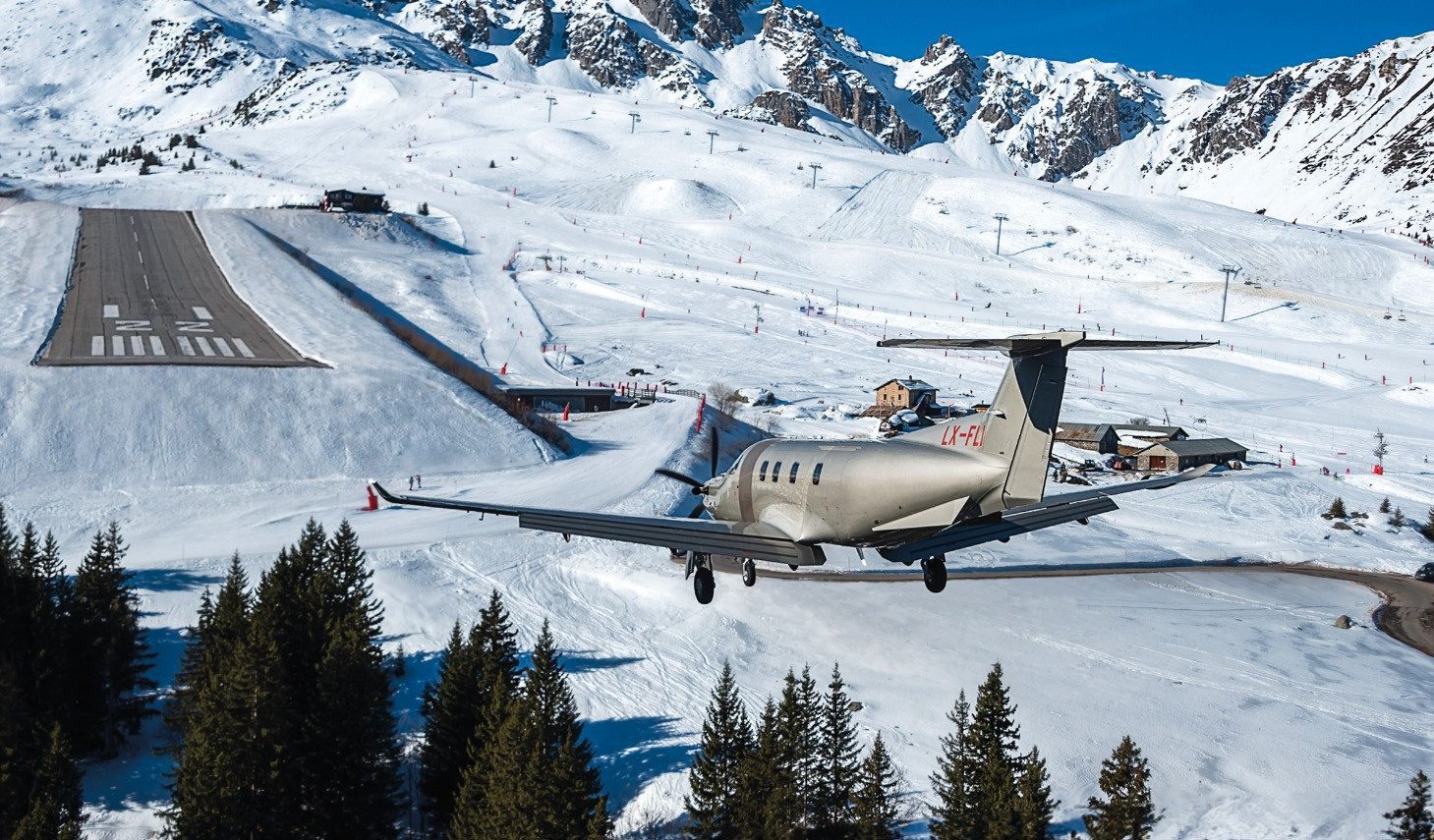
The Cons: Significant Limitations and Failures
Housing Affordability Crisis Across the French Alps
The Loi Montagne’s most significant failure has been its inability to maintain housing affordability for local mountain residents throughout the French Alps region. The controlled development approach, while protecting landscapes, has created severe supply constraints that have priced out seasonal workers and permanent residents from their own communities.
Chamonix, one of the Alps’ most prestigious resort towns, has been forced to implement emergency measures, requiring 50% of new developments to include social housing (increased from 25%) and implementing anti-Airbnb regulations to address local housing shortages. Similar housing crises affect resort workers throughout the region, from Les Menuires to Tignes, where seasonal staff increasingly live in distant valleys and commute to work.
The situation has become so acute that some French Alps resorts struggle to maintain adequate staffing for essential services. Lift operators, ski instructors, restaurant workers, and cleaning staff often cannot afford to live in the communities where they work, threatening the long-term sustainability of the resort economy.
The Tourism Real Estate Restoration Disaster
The 2016 Mountain 2 Act’s provisions for “tourism real estate restoration” have proven to be a complete policy failure across the French Alps. Intended to encourage renovation of ageing 1960s-1980s ski resort buildings that characterise resorts like La Plagne, Les Arcs, Flaine, and Les Menuires, these provisions have been rendered economically impossible by the intersection of regulatory costs and market realities.
Demolition costs alone reach €5,000 per m² for major resort complexes, while new construction meeting current regulations costs €6,000-8,000 per m², creating total project costs of €12,000-15,000 per m². A notable example occurred at La Plagne Bellecote, where a major renovation project priced at €13,000+ per m² failed to find buyers and was withdrawn from the market. This demonstrates that regulatory compliance costs have pushed renovation pricing beyond what mid-tier French Alps resort markets will support.
The Brutalist-era developments that define resorts like Flaine (designed by Marcel Breuer) and Les Menuires present particular challenges for renovation due to their concrete construction, structural limitations, and the high costs of bringing these buildings up to modern energy efficiency standards. The result is continued deterioration of ageing ski resort infrastructure, with developers finding it more economical to completely demolish and rebuild rather than renovate existing structures.
Market Stratification and Exclusivity Across the French Alps
Rather than achieving its stated goal of “equality of income and living conditions,” the Loi Montagne has contributed to extreme market stratification throughout the French Alps. The controlled supply and regulatory compliance costs have created distinct market tiers:
Ultra-luxury resorts like Courchevel 1850 and Val d’Isère command €20,000-30,000+ per m² pricing, serving primarily wealthy international clientele. Mid-tier resorts, including La Plagne, Les Arcs, and Les Menuires, are caught in renovation cost traps, becoming increasingly unaffordable while their ageing infrastructure deteriorates. Lower-tier and family-oriented resorts struggle with infrastructure that cannot be economically updated to meet modern standards.
This stratification has effectively transformed much of the French Alps ski property market into a “playground for the ultra-wealthy” rather than the balanced mountain community development originally envisioned. Traditional mountain villages that evolved into ski resorts now price out the descendants of families who lived there for generations.
Policy Contradictions and Unintended Consequences
The 2016 amendments created fundamental policy contradictions where environmental protection requirements make heritage preservation economically impossible. This is particularly evident in purpose-built French Alps resorts from the 1960s-1980s ski boom, where regulations intended to improve energy efficiency and sustainability have created compliance costs that exceed the economic viability of renovation projects.
Energy efficiency requirements (RT 2020/RE 2020 standards) designed to address climate change concerns have made it virtually impossible to renovate the concrete apartment blocks that define resorts like Les Menuires and La Plagne. The Paris Climate Accord regulations and other environmental legislation create compliance costs that often exceed the underlying property values in mid-tier resorts.
Coming Next Part 2: The Great Confusion - VAT Refunds and Résidences de Tourisme
Now that we’ve cleared up the legal mythology, Part 2 reveals the shocking economic realities I’ve witnessed firsthand, including why a major La Plagne renovation project priced at €13,000+ per m² couldn’t find buyers and was withdrawn from the market.
You’ll get exclusive access to:
Actual cost breakdowns from failed renovation projects
The €5,000/m² demolition reality that makes renovation impossible in mid-tier resorts
Why the 2016 renovation provisions became a complete policy failure
Ready to see the numbers that developers don’t want you to know? The complete economics breakdown reveals why understanding renovation costs could save you hundreds of thousands in investment mistakes.
Abondance | Les Chalets des Cimes
You can contact Domosno via phone: mobile: Please use the #%id to identify the property "Abondance | Les Chalets des Cimes"
Notre Dame De Bellecombe | Les Balcons De Juliette
You can contact Domosno via phone: mobile: Please use the #%id to identify the property "Notre Dame De Bellecombe | Les Balcons De Juliette"
La Toussuire | Le Caprice Blanc
You can contact Domosno via phone: mobile: Please use the #%id to identify the property "La Toussuire | Le Caprice Blanc"
Ready to Buy your ski Home?
Get in touch with our French Alps team to secure your ideal ski property.
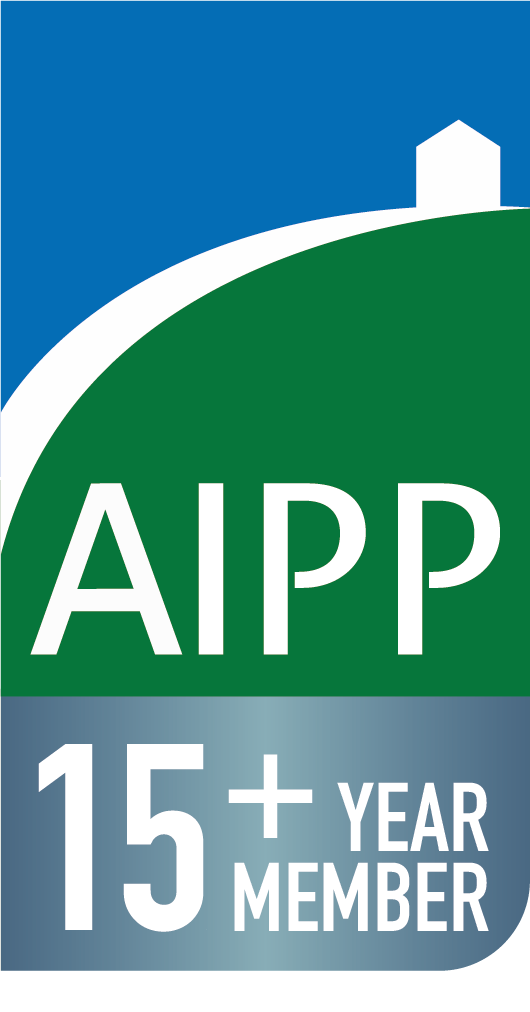
Domosno — member of the
Association of International Property Professionals
since 2010






